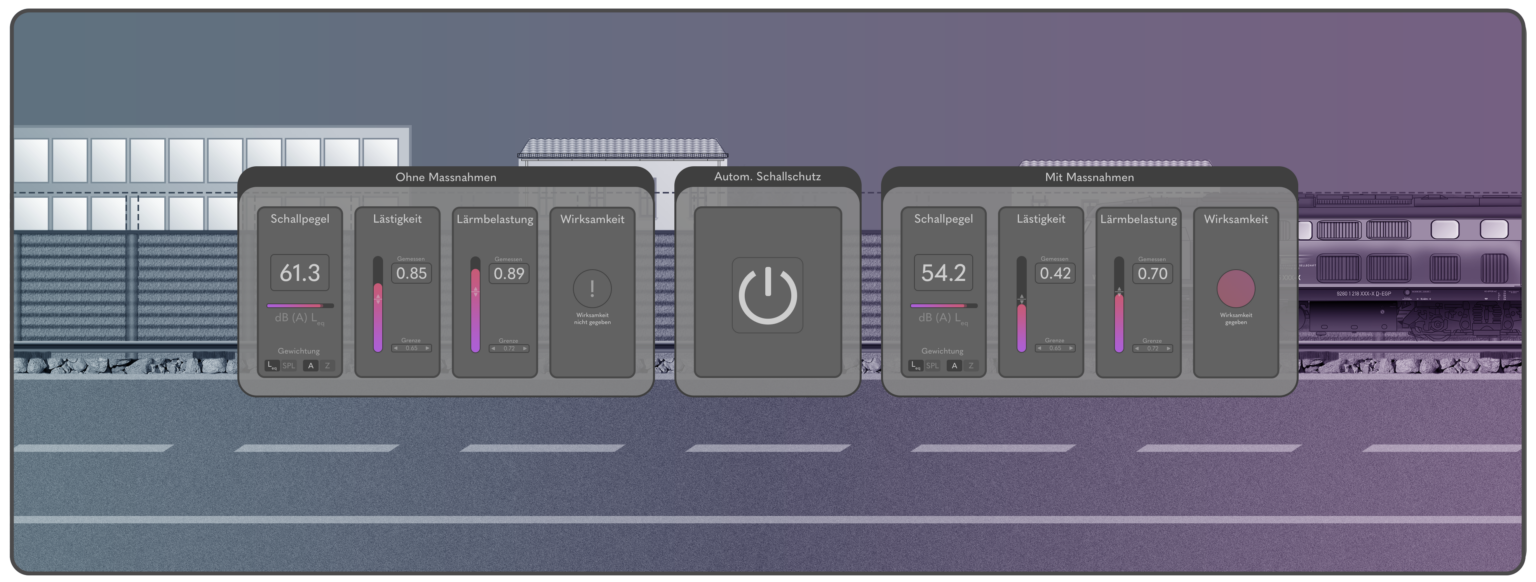EAV-Infra:
Real-time calculation Auralization and
Visualization of sound propagation and
noise protection measures for
Infrastructure projects

Our goals
The research project EAV-Infra aims to develop real-time calculation, auralization, and visualization of sound propagation and noise mitigation measures for infrastructure projects. The goal of the project is to contribute to the digitization of noise protection planning.
Noise protection is a crucial factor in the planning and implementation of infrastructure projects. Complaints by affected residents regularly lead to significant delays in approval processes, causing substantial additional costs and slowing down the urgently needed expansion of environmentally friendly rail transportation and other infrastructure projects. Experience shows that an increase in public acceptance can only be achieved through a better communication strategy by those responsible in politics and business. Innovative simulation tools could make the effects of future noise protection measures realistically experienceable in advance. This has the potential to significantly expedite planning processes and lay the groundwork for cost-effective, automated noise protection planning.
This collaborative project aims to address the described problem by implementing tailored simulation tools for auralization (making audible) of planning scenarios, using the example of rural rail infrastructure in the Prignitz region in the northwestern part of the state of Brandenburg, Germany. By integrating these tools into the digital planning methodology known as Building Information Modeling (BIM), reliable predictions of future noise emissions can be generated from planning data with minimal additional effort. The development process is guided by experts in psychoacoustics to not only achieve realistic auralization but also to develop parameters related to the impact of noise mitigation measures. These parameters should account for the complex processing of human auditory perception, enabling quantitative comparison and assessment of the perceptual, audiovisual effects of different planning alternatives.
Market Perspective and Product Promises
Based on the technologies to be developed, engineering firms, communication service providers, and acoustic offices can potentially offer additional services for nearly all major infrastructure projects across Europe in the future. The achievable gains in efficiency and productivity in the economic optimization and acceleration of planning and approval for infrastructure projects are immense, given the planned volumes for the coming years (€86 billion investment in the German rail infrastructure by 2030). Through more efficient planning processes, calculation, and communication, projects can be expedited, and investment bottlenecks can be avoided. Psychoacoustic parameters can also be used from the perspective of noise protection as an additional consideration in cost-benefit analyses and to reduce noise pollution, for example in the development of new vehicles and noise protection measures.

